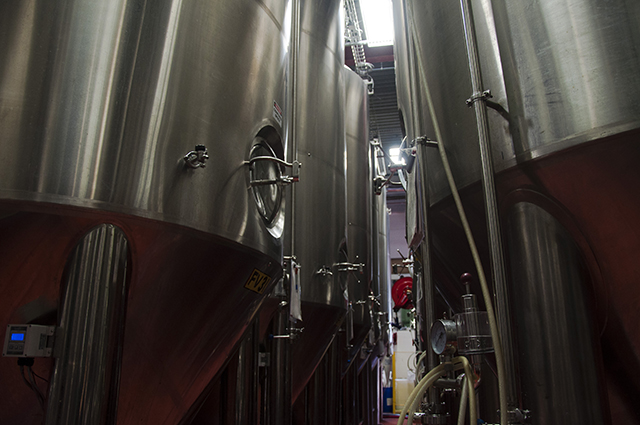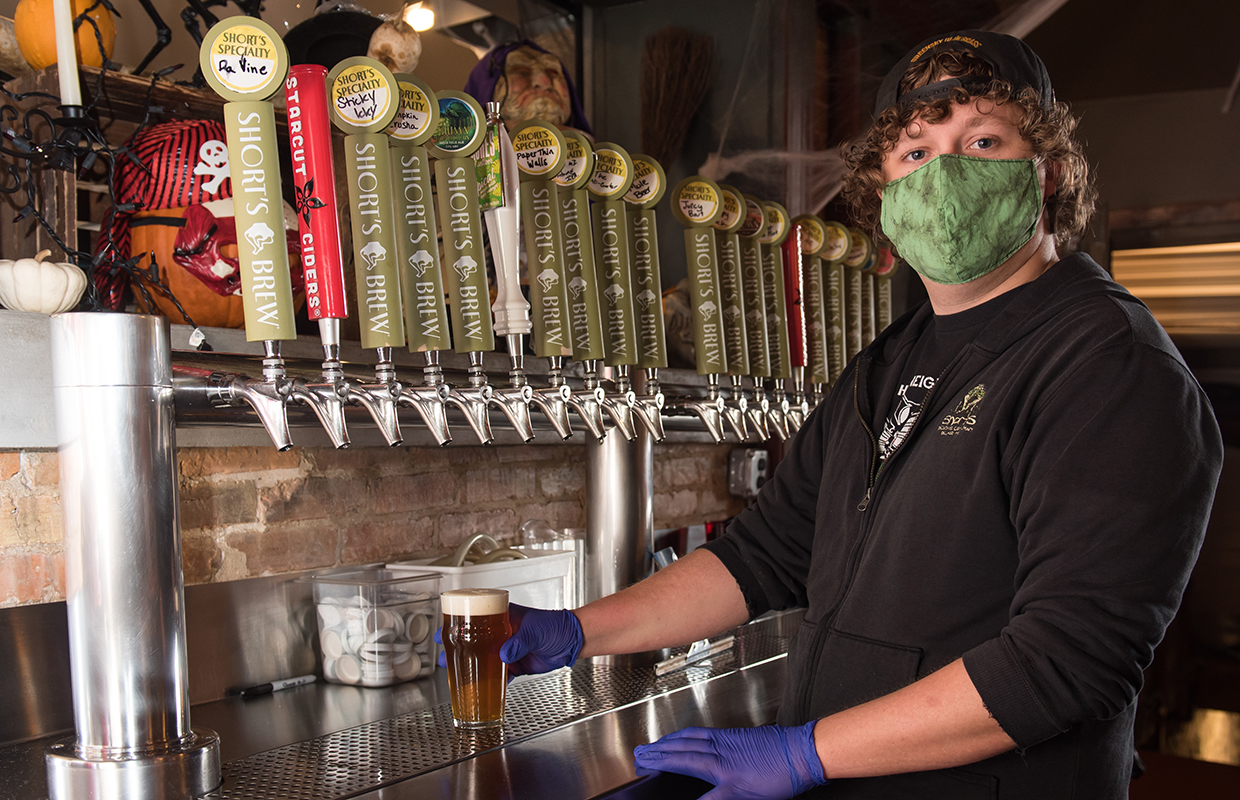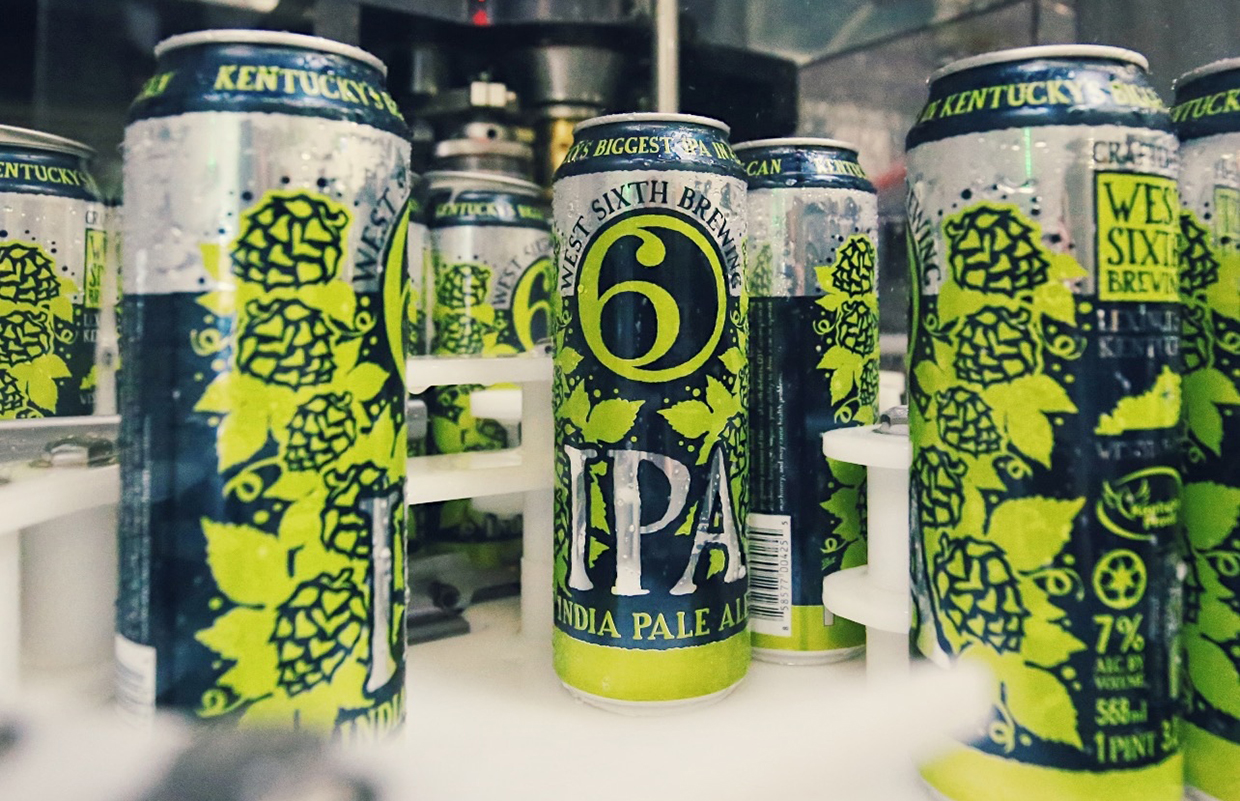
If the question is how much, the answer is usually “more beer” when it comes to brewers. Capacity is king.
The boom in not just the amount of breweries, but the size of equipment also always seems to be on the mind of owners when it comes to upgrading.
Michelle and John Savard, the founders and owners of Wilmington (N.C.) Brewing Company and Wilmington Homebrew Supply have jumped into the foray, going from a homebrew shop to a brewery with a 3-barrel system to now installing a 25-bbl. brewhouse, all in the name of more capacity.
“We are consistently selling out of beer in our taproom and we now want to distribute,” said Michelle Savard who said the brewery’s capacity will almost quadruple from 400 barrels in 2014 to a goal of 1,500 by the end of 2016. “With Wilmington being new to the craft beer movement, we now see an opportunity to keg our beer and get it around town.”
Growth has been on the mind of Parallel 49 Brewing in Vancouver, British Columbia. Head brewer Graham With said they have expanded from about 5,500 bbls. up to a capacity of 38,000 in the span of two years on a 20-bbl. system thanks to additions such as a faster bottling line to help reduce oxygen pickup; a sheet filter to a centrifuge, along with adding a whirlpool and numerous fermenters and brite tanks.
As with most up-and-coming breweries, the first plan is to get equipment to make beer. After that it’s to upgrade for the future.
That second step in upgrading seems to be key for many owners. Constant upgrades every few years can take a toll on profits along with adding a slight learning curve when it comes to working with new equipment and dialing in batch consistency.
For Wilimington Brewing, the upgrade to 25 barrels, along with their 3-bbl. system, keeps them flexible to keep the taproom production separate from the future of distribution around their immediate region.
“We will grow as fast as the market can sustain,” Savard said. “We have future dreams of a canning line, statewide distribution and beyond.”
Cost played a role in bumping up so large for Wilmington Brewing.
The original plan, Savard said was to sell the 3-barrel system and buy a new 15-bbl brewhouse. An online posting changed their mind when they realized they could get a good deal on an used 25-barrel system.
“It was a great deal, we won’t have to expand or upgrade for a long, long time,” she said, “and of course we can produce more beer.”
Parallel 49 has also added a lab for quality control and quality assurance. A dissolved oxygen meter was essential, With said, to see what was contributing the most to high levels of dioxide.
“We based most of our upgrades on equipment that would lower our oxygen pickup along with producing more beer,” With said. Along with capacity, space to house all the equipment to make that capacity reach its potential.
Willimington was fortunate enough to have almost 12,000 square feet from the start so the building did not play a part in affecting expansion.
“Although it is always tricky to get a 25-barrel kettle through the door, we had to make another one,” Michelle said.
With said Parallel 49 used the experience of other fellow brewers that had used up their square footage too soon, which inhibited growth. After their latest growth, With said that Parallel 49 has grown to the size that they plan to be at for a while in the Canadian province.
“We found a location that had quite a bit of extra space in order to handle the growth that we expected,” he said. “We also were very lucky to pick up a couple of buildings adjacent to ours and that really helped to facilitate the larger equipment needed.”






Be the first to comment